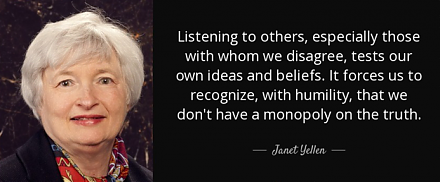

2022-04-25 10:34:00 Mon ET
corporate finance agency theory managerial entrenchment firm value corporate governance dynamic panel data analysis rent protection ceo overconfidence lucian bebchuk corporate ownership stock ownership family ownership upper echelon top management minority shareholders blockholders private benefits of control andrei shleifer
The genesis of modern corporate governance and ownership studies traces back to the seminal work of Berle and Means (1932). The Berle-Means theory serves as the canonical qualitative foundation for the separation of corporate ownership and control. According to this thesis, corporate control over physical assets reacts to a centripetal force and tends to concentrate in the hands of only a few incumbents, whereas, corporate ownership is centrifugal, splits into small units, and passes from person to person. In the Berle-Means image of the modern corporation, executives and directors gain their income primarily from the effort that these incumbents put into business decisions, but not from the return on their stock investment in the enterprise. To the extent that corporate structures evolve in response to competitive pressures in the capital markets, the Berle-Means thesis predicts gradual convergence toward diffuse incumbent stock ownership as the most efficient form.
The Berle-Means theory has influenced the subsequent development of agency theory that highlights a potential conflict of interest between corporate incumbents and shareholders (Jensen and Meckling, 1986; Fama and Jensen, 1983). Subsequent studies question the empirical prevalence of the Berle-Means image of the modern corporation (e.g. Demsetz (1983), Demsetz and Lehn (1985), Shleifer and Vishny (1986), Morck, Shleifer, and Vishny (1988), and Holderness and Sheehan (1988)). The recent strand of law-and-finance literature suggests that the Berle-Means widely held corporation should prevail primarily in rich common-law countries with sound legal protection of minority shareholder rights (La Porta, Lopez-de-Silanes, Shleifer, and Vishny, 1997, 1998). Whether Berle-Means functional convergence toward greater stock ownership dispersion takes place in practice remains an empirical puzzle.
La Porta, Lopez-de-Silanes, and Shleifer (1999) offer an empirical refutation of the Berle-Means thesis. La Porta et al analyze data on ownership structures of large corporations in 27 rich economies to identify the ultimate controlling shareholders of these firms via pyramidal chains and cross-ownership structures. The main evidence suggests that except in economies with robust legal protection of investor rights, few of these firms are widely held with diffuse stock ownership in the Berle-Means sense. Alternatively, these firms are typically family firms or state enterprises. Equity control by financial institutions prevails only in some bank-centric financial systems such as Japan and Germany. The controlling shareholders tend to have power over firms in excess of their cash flow rights primarily through direct managerial influence and the use of pyramidal chains and cross-ownership structures. As a result, the main implication of this empirical work is that the theory of corporate finance for most countries should focus on the incentives of controlling shareholders to both benefit and expropriate minority shareholders.
Claessens, Djankov, and Lang (2000) examine the separation of ownership and control for 2,980 corpora-tions in East Asian countries. In all these countries, voting rights frequently exceed cash-flow rights via pyramidal chains and cross-ownership structures. This separation of ownership and control is most pro-nounced among family firms and small firms. A single shareholder retains the ultimate corporate control in more than 66% of these East Asian corporations. Nevertheless, the concentration of corporate control generally dwindles with the level of a country’s economic development.
Political connections matter a great deal to Chinese CEOs in several major corporate decisions, whereas, these connections have a negative effect on corporate performance in terms of post-IPO earnings growth, sales growth, or profit margin (Fan, Wong, and Zhang, 2007). In East Asia, some large corporations often find it necessary to bribe senior bureaucrats to derive state protection in the form of exclusive trade rights, commercial privileges, and preferential state-enterprise contracts (Claessens, Djankov, and Lang, 2000). From a corporate governance standpoint, the concentration of voting rights is crucial as this concentration allows owners to determine capital investment, M&A, R&D innovation, dividend or repurchase payout, capital structure, managerial personnel, and so forth. To the extent that voting rights often exceed cash-flow rights in many East Asian conglomerates, this control-ownership wedge exacerbates the potential conflict of interest between inside blockholders and minority shareholders. For instance, the Li Ka-Shing conglomerate, which is the largest business group in Hong Kong, comprises 25 companies that are among the largest in Hong Kong in terms of market capitalization. The Li Ka-Shing family holds and controls 35% stock ownership of Cheung Kong Hutchison Group, whose pyramidal chains result in 34% voting control and 2.5% cash-flow ownership of Hong Kong Electric (Claessens, Djankov, and Lang, 2000: 97). This example suggests that a large family conglomerate retains effective control of a subsidiary company with relatively small stock ownership of cash flow rights in this subsidiary company. Both the prevalence and dominance of family firms suggest that significant corporate wealth tends to concentrate in the hands of a few hereditary elites from generation to generation (Piketty, 2014).
Corporate insiders who control firm-specific assets can potentially expropriate outside minority investors by diverting resources for their personal use or by committing funds to unprofitable investment projects that provide private benefits of control to these insiders. This diversion grants incumbents the opportunity to increase their current wealth or perquisite consumption without bearing the full cost of their actions (Shleifer and Vishny, 1997). While some earlier evidence suggests a concave quadratic relation between incumbent stock ownership and firm value (McConnell and Servaes, 1990; Morck, Shleifer, and Vishny, 1988; Holderness, Kroszner, and Sheehan, 1999), some recent studies point to the potential endogeneity issue that all of corporate ownership, investment availability, and firm valuation are jointly determined (Demsetz and Lehn, 1985; Cho, 1998; Himmelberg, Hubbard, and Palia, 1999; Core and Larcker, 2002). Controlling for this endogeneity may yield an unclear nexus between insider ownership and firm value.
Lemmon and Lins (2003) assess whether different corporate ownership structures can explain differences in firm performance during the East Asian financial crisis from July 1997 to August 1998. The crisis can serve as an exogenous shock that helps ameliorate the endogeneity issue around the relationship between corporate ownership and firm valuation. The main hypothesis is that during the crisis firm value should decline the most in firms where incumbents use ownership structures that permit these corporate insiders to effectively control the firm through high control-ownership leverage. With corporate ownership data for 800 East Asian firms, Lemmon and Lins (2003) find substantive stock return evidence in support of this hypothesis. In many East Asian firms, incumbents are able to effectively control the firm even though these corporate insiders hold relatively low cash flow ownership (i.e. the control-ownership leverage is about 2.17 times on average). During the crisis, the average cumulative stock return for firms in the high control-ownership leverage group is –56.2% in comparison to –46.5% for firms in the low leverage group. Ceteris paribus, the 9.7% difference is statistically significant at any conventional confidence level. Thus, firms with high control-ownership leverage exhibit significantly worse stock return performance during the crisis in comparison to firms with low leverage. The ability to control the firm’s assets is a necessary antecedent for the expropriation of minority shareholders.
Lemmon and Lins’s (2003) evidence resonates with a recent line of corporate ownership and governance literature that the widespread use of pyramidal chains and cross-ownership structures in East Asia allows corporate insiders to exercise effective control over the firm although these insiders hold relatively few of its cash flow rights (La Porta, Lopez-de-Silanes, and Shleifer, 1999; Claessens, Djankov, and Lang, 2000; Lins, 2003). In many emerging markets, the absence of robust legal protective rules and institutions or other external governance mechanisms such as takeovers and block-ownership limits further increases the severity of agency problems between inside blockholders and minority shareholders.
High incumbent stock ownership concentration exacerbates the deviation from the social optimum when inside blockholders hold excess voting control rights in comparison to their cash flow rights. For instance, the cost of debt is significantly higher for firms with a wider wedge between the largest ultimate owner’s control rights and cash flow rights due to potential tunneling and self-dealing behaviors and other moral hazard activities by inside blockholders (Lin, Ma, Malatesta, and Xuan, 2011). Also, the shadow price of external finance is significantly higher for firms that experience a wider control-ownership wedge among corporate insiders, thus corporations whose incumbents have large excess control rights tend to face more severe financial constraints (Lin, Ma, and Xuan, 2011). These negative outcomes tend to arise from high incumbent stock ownership concentration. The above equilibrium interplay between inside blockholders and small minority shareholders suggests corporate rent protection in favor of incumbents who hold large blocks of stock in the firm.
Corporate insiders who control firm-specific assets can potentially expropriate outside minority investors by diverting resources for their personal use or by committing funds to unprofitable investment projects that provide private benefits of control to these insiders. This diversion grants incumbents the opportunity to increase their current wealth or perquisite consumption without bearing the full cost of their actions (Shleifer and Vishny, 1997). While some earlier evidence suggests a concave quadratic relation between incumbent stock ownership and firm value (McConnell and Servaes, 1990; Morck, Shleifer, and Vishny, 1988; Holderness, Kroszner, and Sheehan, 1999), some recent studies point to the potential endogeneity issue that all of corporate ownership, investment availability, and firm valuation are jointly determined (Demsetz and Lehn, 1985; Cho, 1998; Himmelberg, Hubbard, and Palia, 1999; Core and Larcker, 2002). Controlling for this endogeneity may yield an unclear nexus between insider ownership and firm value.
Coles, Lemmon, and Meschke (2012) examine the relation between managerial ownership and firm value. The equilibrium relationship between the endogenous variables yields the familiar concave hump when one regresses Tobin’s q on CEO ownership and its square. While a common interpretation of the hump rests on a trade-off between incentive alignment and incumbent entrenchment, the principal-agent model lends credence to the central idea that both firm value and insider ownership vary together as endogenous determinants, as the underlying explanatory variables and marginal productivity of managerial input and investment vary both in the cross-section and through time. Thus, this model provides an explanation for the empirical nexus between firm value and CEO ownership as an envelope of optimal contract design. Including simple transformations of the productivity parameters drives out the concave quadratic nexus between Tobin’s q and CEO ownership. To the extent that both firm value and incumbent ownership vary together endogenously, this simultaneity results in an ambiguous nexus after one adequately controls for a unique array of exogenous productivity parameters (Coles, Lemmon, and Meschke, 2012).
With substantial ownership of cash flow rights, founding families have both the incentive and power to take actions that benefit themselves at the expense of non-family investors. Large undiversified investors are able to apply different investment rules relative to atomistic shareholders (Fama and Jensen, 1985). The former can evaluate their stock investments based on market values that maximize the present value of each firm’s residual cash flows, whereas, the latter may derive more benefits from pursuing corporate objectives such as firm growth, technological innovation, or firm survival apart from shareholder wealth maximization. Families are also able to expropriate wealth from the firm through excess compensation, related-party transactions, special dividends, or rent redistributions from employees (e.g. DeAngelo and DeAngelo (2000) and Shleifer and Summers (1988)). In addition, family ownership concentration limits the likelihood of hostile takeovers and thus effectively leads to greater managerial entrenchment (Barclay and Holderness, 1989; Shleifer and Vishny, 1997). The above arguments suggest that substantial family equity stakes can adversely affect firm value due to myopic investment choice, direct cash expropriation, and incumbent entrenchment.
In contrast, Demsetz and Lehn (1985) note that it can be advantageous to combine ownership and control because large shareholders can act to mitigate managerial expropriation of small minority shareholders. For instance, the family’s historical presence, large undiversified equity position, and effective control of incumbents place the family members in an extraordinary position to monitor firm performance. Also, the family can envision a longer investment horizon, and this long-termism can lead to greater investment efficiency. In turn, the presence of shareholders who envision long investment horizons can mitigate the incentives for myopic investment decisions by managers (Stein, 1988, 1989). Founding-family presence can therefore contribute to better firm performance in the long run. In addition, the long-term nature of founding family ownership suggests that external parties are more likely to deal with the same governing bodies and practices in family firms. A major consequence of long-term family presence is a significantly lower cost of debt in family firms (Anderson, Mansi, and Reeb, 2003). Thus, family presence, reputation, and ownership concentration can have a positive effect on firm value. Whether higher family ownership concentration hinders or facilitates firm performance becomes an empirical issue.
Anderson and Reeb (2003) assess the relation between founding-family ownership and firm performance in S&P 500 corporations. In terms of firm performance measures such as Tobin’s q and ROA, both young and mature family firms outperform non-family firms by an order of magnitude. This evidence contrasts Faccio, Lang, and Young’s (2001) empirical study of serious agency problems in East Asian family firms. These complementary studies thus reinforce the more inclusive interpretation that family ownership per se is not necessarily a less effective organizational structure. The ability of corporate outsiders to monitor family engagement in corporate activities is an important attribute in minimizing family manipulations. In transparent markets with sound legal protection of investor rights (such as Corporate America), family ownership in large public corporations helps mitigate agency problems without leading to severe losses in managerial efficiency.
Villalonga and Amit (2006) carry out an empirical examination of Fortune 500 firms from 1994 to 2000 to assess the differential effect of family ownership, control, and management on firm value or Tobin’s q. Family ownership creates value for all of the firm’s shareholders only when the founder is still active in the firm either as the CEO or as the chairman with a professional CEO. When family firms are run by descendant-CEOs, minority shareholders become worse off due to a decline in firm value ceteris paribus. Within family firms, founders create the greatest value when there are no entrenchment mechanisms such as multiple share classes with differential voting rights, pyramids, cross-ownership structures, or voting agreements, which may inadvertently facilitate the expropriation of non-family minority shareholders.
In sum, Villalonga and Amit (2006) establish the various empirical regularities below ceteris paribus:
<1> Higher family ownership concentration contributes to higher firm value or Tobin’s q.
<2> Greater family control rights that exceed family cash flow rights erode firm value.
<3> Family CEO management has a minimal effect on firm value.
Bennedsen, Nielsen, Perez-Gonzalez, and Wolfenzon (2006) attempt to isolate the causal effect of family CEOs on firm performance via the use of the gender of the departing CEO’s first-born child as a plausible instrumental variable. This variable is a valid instrument for family successions because this instrument affects the probability of primogeniture and does not correlate with the firm’s prospects. The gender of the departing CEO’s first-born child strongly correlates with the firm’s decision to appoint a family CEO. The frequency of family transitions is 29% when the first-born child is female and rises to 39% when the first-born child is male. Bennedsen et al’s (2006) main evidence suggests that family successions have a large negative causal impact on firm performance: ROA declines by 4% around family CEO successions. The family-CEO underperformance is particularly large in fast-growing industries, industries with highly specialized labor force, and relatively large firms. Primogeniture rules, which dictate who gains access to the helm of a firm based on birth order or gender as opposed to competence, have significantly negative consequences for firm performance. The flip side of this rationale suggests that professional non-family CEOs provide valuable services to their corporations in the form of better operating performance.
Perez-Gonzalez (2006) notes the pervasiveness and prominence of family ownership in publicly traded U.S. firms while Shleifer and Vishny (1986) report that families control more than 30% of Fortune 500 firms. The family’s long-standing institutional knowledge and information base can provide benefits to outside minority investors by facilitating better internal governance and access to external capital markets (Anderson and Reeb, 2003). Both academic research and anecdotal evidence suggest that family CEOs earn greater profits on their stock trades than CEOs of non-family firms (Demsetz, 1986). This strand of literature highlights the empirical nexus between family control and corporate information leakage.
Anderson, Reeb, and Zhao (2012) assess the relationship between family control and short sale activity. Beyond the private motives of families to pursue short sales, family members themselves can be a source of information leakage that provides outside investors with incentives to engage in short sales. Moreover, incumbents who are not members of the family group may be disgruntled with direct family interference or family domination of senior managerial posts. This discontent may result in the deliberate leakage of material private information with respect to major corporate activities. Anderson, Reeb, and Zhao’s (2012) empirical analysis indicates that family firms experience substantially greater abnormal short sales prior to negative earnings surprises than non-family firms. Specifically, family firms experience 17 times more abnormal short sales in advance of negative earnings shocks than non-family firms. Also, an investment strategy that both buys the portfolio of family stocks with minimal short sales and simultaneously sells the portfolio of family stocks with maximal short sales earns a Fama-French-Carhart alpha of 0.61% per month. In non-family firms, however, there is no clear relation between short-sale activity and subsequent stock return performance. Overall, Anderson, Reeb, and Zhao’s (2012) evidence suggests that daily short sale interest in family firms conveys useful information about future stock return performance.
This analytic essay cannot constitute any form of financial advice, analyst opinion, recommendation, or endorsement. We refrain from engaging in financial advisory services, and we seek to offer our analytic insights into the latest economic trends, stock market topics, investment memes, personal finance tools, and other self-help inspirations. Our proprietary alpha investment algorithmic system helps enrich our AYA fintech network platform as a new social community for stock market investors: https://ayafintech.network.
We share and circulate these informative posts and essays with hyperlinks through our blogs, podcasts, emails, social media channels, and patent specifications. Our goal is to help promote better financial literacy, inclusion, and freedom of the global general public. While we make a conscious effort to optimize our global reach, this optimization retains our current focus on the American stock market.
This free ebook, AYA Analytica, shares new economic insights, investment memes, and stock portfolio strategies through both blog posts and patent specifications on our AYA fintech network platform. AYA fintech network platform is every investor's social toolkit for profitable investment management. We can help empower stock market investors through technology, education, and social integration.
We hope you enjoy the substantive content of this essay! AYA!
Andy Yeh
Chief Financial Architect (CFA) and Financial Risk Manager (FRM)
Brass Ring International Density Enterprise (BRIDE) ©
Do you find it difficult to beat the long-term average 11% stock market return?
It took us 20+ years to design a new profitable algorithmic asset investment model and its attendant proprietary software technology with fintech patent protection in 2+ years. AYA fintech network platform serves as everyone's first aid for his or her personal stock investment portfolio. Our proprietary software technology allows each investor to leverage fintech intelligence and information without exorbitant time commitment. Our dynamic conditional alpha analysis boosts the typical win rate from 70% to 90%+.
Our new alpha model empowers members to be a wiser stock market investor with profitable alpha signals! The proprietary quantitative analysis applies the collective wisdom of Warren Buffett, George Soros, Carl Icahn, Mark Cuban, Tony Robbins, and Nobel Laureates in finance such as Robert Engle, Eugene Fama, Lars Hansen, Robert Lucas, Robert Merton, Edward Prescott, Thomas Sargent, William Sharpe, Robert Shiller, and Christopher Sims.
Follow our Brass Ring Facebook to learn more about the latest financial news and fantastic stock investment ideas: http://www.facebook.com/brassring2013.
Follow AYA Analytica financial health memo (FHM) podcast channel on YouTube: https://www.youtube.com/channel/UCvntmnacYyCmVyQ-c_qjyyQ
Free signup for stock signals: https://ayafintech.network
Mission on profitable signals: https://ayafintech.network/mission.php
Model technical descriptions: https://ayafintech.network/model.php
Blog on stock alpha signals: https://ayafintech.network/blog.php
Freemium base pricing plans: https://ayafintech.network/freemium.php
Signup for periodic updates: https://ayafintech.network/signup.php
Login for freemium benefits: https://ayafintech.network/login.php
If any of our AYA Analytica financial health memos (FHM), blog posts, ebooks, newsletters, and notifications etc, or any other form of online content curation, involves potential copyright concerns, please feel free to contact us at service@ayafintech.network so that we can remove relevant content in response to any such request within a reasonable time frame.
2021-07-07 05:22:00 Wednesday ET

What are the best online stock market investment tools? Stock trading has seen an explosion since the start of the pandemic. As people lost their jobs an
2024-04-02 04:45:41 Tuesday ET

Stock Synopsis: High-speed 5G broadband and mobile cloud telecommunication In the U.S. telecom industry for high-speed Internet connections and mobile cl
2025-08-09 11:31:00 Saturday ET

Wharton e-commerce entrepreneurship professor Dr Karl Ulrich explains that many top-notch universities now provide massive open online courses (MOOCs) for m
2019-01-21 10:37:00 Monday ET

Andy Yeh Alpha (AYA) AYA Analytica financial health memo (FHM) podcast channel on YouTube January 2019 In this podcast, we discuss several topical issues
2019-08-20 07:33:00 Tuesday ET

The recent British pound depreciation is a big Brexit barometer. Britain appoints former London mayor and Foreign Secretary Boris Johnson as the prime minis
2017-12-11 08:42:00 Monday ET

Fed Chair Janet Yellen says the current high stock market valuation does not mean overvaluation. A stock market quick fire sale would pose minimal risk to t